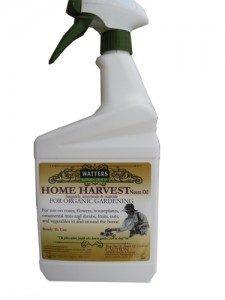Rosemary is a natural for hot sunny gardens. Originating in the hills surrounding the  Mediterranean, there are varieties that are equally at home in our mountain gardens. If you have struggled with a not-so-green thumb, a type of this fragrant evergreen that blooms most of the year should be on your list. Heck, I’m a gardener and I love to plant this easy to grow herb, especially since javalina, rabbits, and deer never bother with it. There are many kitchen recipes calling for fresh herbs, and this is one flavor that most people enjoy.
Mediterranean, there are varieties that are equally at home in our mountain gardens. If you have struggled with a not-so-green thumb, a type of this fragrant evergreen that blooms most of the year should be on your list. Heck, I’m a gardener and I love to plant this easy to grow herb, especially since javalina, rabbits, and deer never bother with it. There are many kitchen recipes calling for fresh herbs, and this is one flavor that most people enjoy.
Starting a Rosemary Plant
A nice landscape-sized rosemary plant can take years to fill out if started from seed. The seeds can be difficult to germinate and often don’t grow true to their parent, so propagation usually is from cuttings. It can be started in a glass of water, but it will be difficult to transplant into soil with only water roots. If you want to start this herb from a cutting, it’s fairly easy to do. Here are the best steps to start your own rosemary plant:
- Snip three 2-inch long cuttings from the soft, new growth of an established plant. Remember, plants from these cuttings will look just like their mother, so choose cuttings from a beautiful plant.
- Remove the leaves from the bottom inch of each cutting and dip it into Bonides Rooting Powder, available here at Watters.
- Carefully place the dipped ends into a container of dampened Seedling Potting Soil.
- Stick 3 cuttings into each pot to ensure against cutting failures.
- Place the container in a warm spot with indirect sunlight.
- Mist the cuttings daily and make sure the soil does not dry out completely.
In 2 weeks, test for root growth by very gently tugging on the cuttings. Once your cuttings have rooted pull out the weakest cuttings leaving the strongest one to root. As the cutting begins to grow, pinch off the tip to encourage it to develop side branches.
While starting a plant from a cutting can be a rewarding project, be advised:
You will make things far easier on yourself if you start with a healthy, fully-grown plant from Watters!
Growing Rosemary in the Landscape
The three fundamentals for successfully growing rosemary are: Sun, Good Drainage, and Good Air Circulation. These requirements are easy to find in our mountain gardens.
Prepare the soil by digging a hole that is 3 times wider than the plant’s roots and the same depth. Screen rocks, old roots, and debris from the soil and amend with Watters Premium Mulch. Compact this blended landscape soil around your new plant and water well. A new landscape planting will need twice a week watering for it’s first year of life.
Rosemary is not a heavy feeder, but fertilizing in spring with Watters All Purpose Plant Food 7-4-4 will get it off to a good start. Reapply this same food in the fall to encourage blooms well into the winter growing season.
Bringing Rosemary Indoors
It can be a little trickier to keep rosemary happy inside. Your rosemary plant requires 6 hours of full sun, so artificial lights may be necessary. Heat is not as crucial as sunlight. Since rosemary likes it on the dry side, glazed clay and terra cotta pots are especially good choices for this plant.
Problems of Rosemary Plants
The biggest problem with growing rosemary indoors is its tendency for powdery mildew. Powdery mildew is a white, powdery fungus that can develop if the surrounding air is humid and there is not enough air movement.
Keep the humidity low by allowing the soil to dry somewhat between waterings, keeping  the plant in sunlight, and, if necessary, running a fan for a few hours a day to create a breeze.
the plant in sunlight, and, if necessary, running a fan for a few hours a day to create a breeze.
Also be on the lookout for aphids and spider mites. These pests seem to like spending their winters on houseplants! Catching them before a total infestation of the plant will make them easier to control. Spray up to the day of harvest with organic Watters Home Harvest with neem oil to wipe out these pests.
Maintaining a Potted Rosemary
As with most potted plants, the soil in your rosemary pot will degenerate through watering and root growth. Replace it at least once a year. Spring is a good time to repot your rosemary, but it should be fine no matter what time of year you do it.
When the rosemary plant puts out considerable growth or looks like it just can’t get enough water, it has outgrown its pot and needs to be transplanted into a larger one. If you want to maintain the size of your rosemary plant, root prune by slicing off a couple of inches of the roots from the bottom and sides of the root ball and replanting it in the same pot. Be sure to trim off some of the top of the plant; this will ease the workload of the roots and the stress placed upon the trimmed plant. Then allow your repotted plant some time to regroup. It should reward you with many more seasons of cooking herbs and flowers.
Using Rosemary
Rosemary is a triple threat herb. It’s pretty, fragrant, and delicious. Both the leaves and the flowers are edible. Simply snip off pieces of the parts of the plant as you need them.
For more details, visit us here at Watters Garden Center, your local organic herb source.
Ken Lain can be found throughout the week at Watters Garden Center, 1815 W. Iron Springs Rd in Prescott, or contacted through his web site at WattersGardenCenter.com or FB.com/WattersGardenCenter

